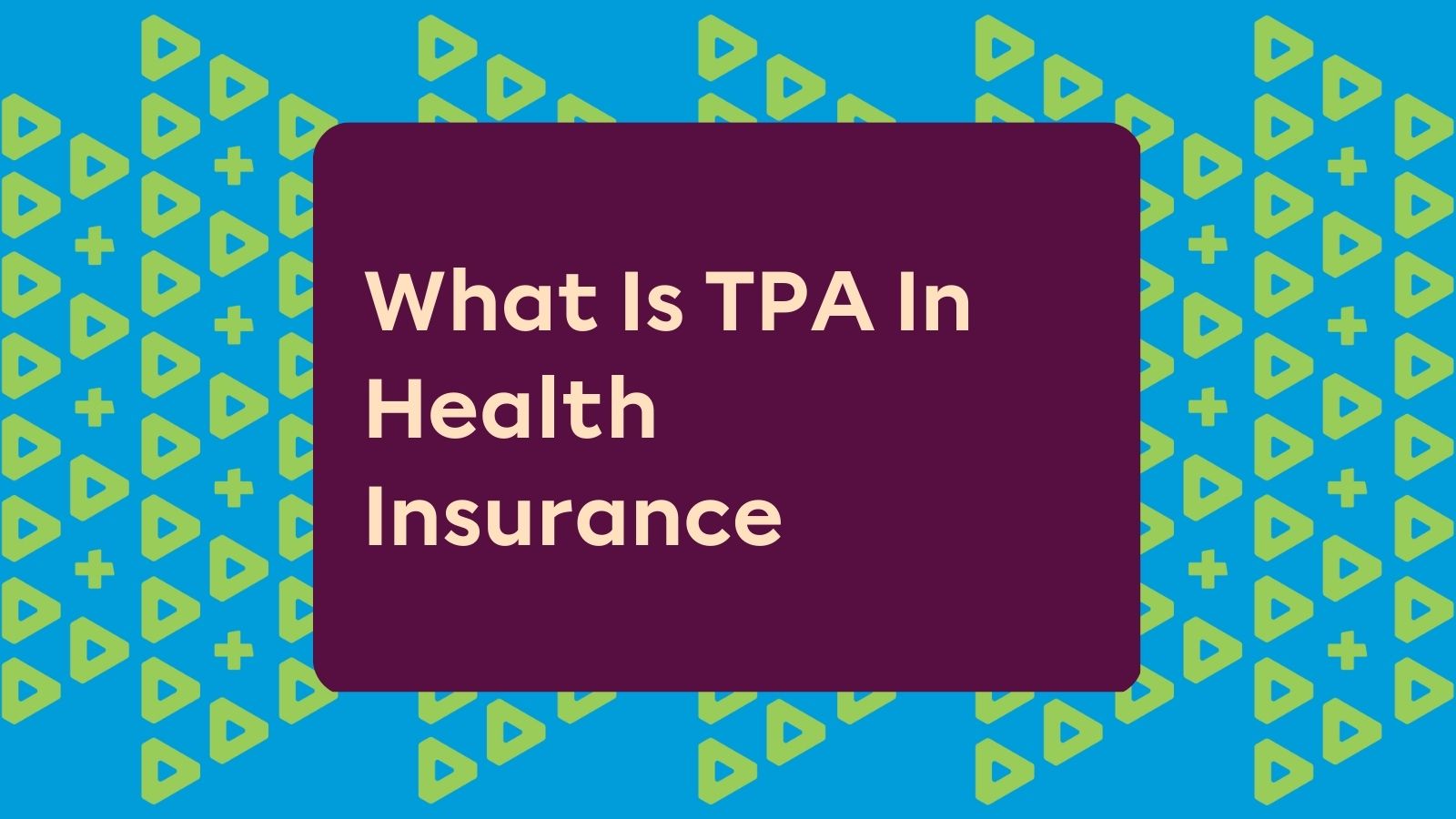

Finance
What Is AML In Insurance
Published: November 23, 2023
Learn what AML (Anti-Money Laundering) means in the insurance industry and how it impacts finance. Uncover the importance of AML in safeguarding against financial crimes.
(Many of the links in this article redirect to a specific reviewed product. Your purchase of these products through affiliate links helps to generate commission for LiveWell, at no extra cost. Learn more)
Table of Contents
Introduction
Money laundering is a pervasive illegal activity that poses significant threats to the global economy, including the insurance industry. As a result, insurance companies are under increasing pressure to implement strong anti-money laundering (AML) measures. AML refers to the process of identifying and preventing the conversion of illicit funds into legitimate assets. In the insurance sector, AML efforts are focused on detecting and mitigating risks associated with money laundering.
Insurance providers play a critical role in detecting and reporting suspicious activities that may be linked to money laundering. By implementing stringent AML practices, insurance companies can contribute to the broader fight against financial crimes such as fraud, terrorism financing, and organized crime. AML initiatives not only protect the integrity of the insurance industry but also safeguard policyholders and society at large.
This article will delve into the definition of AML in the insurance context, explore the regulatory landscape, discuss AML procedures and practices within the insurance industry, highlight the role of technology in AML, examine AML training and education, outline the challenges and risks associated with AML implementation, and lastly, discuss the benefits of effective AML measures.
Definition of AML in Insurance
Anti-Money Laundering (AML) in the insurance industry refers to the set of policies, procedures, and internal controls implemented by insurance companies to prevent and detect money laundering activities. Money laundering involves the process of transforming illegally obtained funds into “clean” money that appears to be derived from legitimate sources. AML measures aim to identify and mitigate the risks associated with money laundering, thereby safeguarding the financial system and the insurance industry from being used as a channel for illegal activities.
In the insurance sector, money laundering may occur through policies such as life insurance, annuities, and health insurance. Criminals can exploit insurance policies and premiums to legitimize their illicit funds. For example, they may purchase insurance policies using illegal proceeds or use fraudulent claims to receive insurance payouts.
Insurance companies are required by law to implement AML practices to comply with regulatory guidelines and prevent their services from being misused for illicit purposes. The AML framework in the insurance industry typically involves conducting thorough customer due diligence (CDD), ongoing monitoring of transactions, and reporting any suspicious activities to the relevant authorities.
The Financial Action Task Force (FATF), an international body that sets standards and promotes effective implementation of AML measures, provides guidance to insurance companies on AML compliance. These guidelines emphasize the risk-based approach, whereby insurance companies must assess the level of money laundering risk associated with their customers, products, and geographic locations, and implement appropriate controls accordingly.
Furthermore, insurance companies are also subject to country-specific regulatory requirements, such as the USA PATRIOT Act in the United States, which mandates the establishment of AML programs and reporting suspicious transactions to the Financial Crimes Enforcement Network (FinCEN).
Overall, the definition of AML in the insurance industry encompasses the implementation of policies, procedures, and controls to prevent and detect money laundering activities, ensuring compliance with regulatory obligations and protecting the integrity of the insurance sector.
Regulations and Compliance
As the insurance industry faces increased scrutiny in the fight against money laundering, it is essential for insurance companies to understand and comply with relevant regulations and guidelines. Compliance with AML regulations is crucial to avoid legal and reputational risks, as well as to maintain the trust of policyholders and the broader financial community.
The regulatory framework for AML in the insurance industry varies from country to country. However, there are some common international standards and guidelines that serve as a foundation for AML compliance. The Financial Action Task Force (FATF) sets global standards and provides recommendations for countries to establish effective AML regimes.
In many jurisdictions, insurance companies are legally obligated to implement comprehensive AML programs that align with the local regulatory requirements. These programs typically include policies and procedures for customer due diligence (CDD), ongoing monitoring of customer relationships, reporting suspicious activities, and training employees in AML awareness.
Additionally, insurance companies are often required to conduct risk assessments to identify and mitigate potential money laundering risks within their operations. These assessments help companies determine the appropriate level of due diligence and monitoring for their customers, products, and business relationships.
Insurance regulators play a vital role in ensuring compliance with AML regulations. They regularly assess insurance companies’ AML programs and perform on-site inspections to verify compliance with regulatory obligations. Non-compliance with AML regulations can result in severe penalties, including fines, loss of licenses, and damage to the company’s reputation.
Insurance companies must also be aware of international sanctions imposed by regulatory bodies, such as the United Nations, European Union, and the Office of Foreign Assets Control (OFAC) in the United States. These sanctions prohibit doing business with individuals, groups, or countries involved in activities that pose a threat to international security or human rights.
Staying compliant with AML regulations requires a proactive approach. Insurance companies should establish robust internal controls, conduct regular risk assessments, and stay updated on changes in AML laws and regulations. Implementing comprehensive compliance programs not only helps insurance companies meet their regulatory obligations but also enhances their reputation as trusted financial service providers.
AML Procedures and Practices in Insurance
In order to effectively combat money laundering, insurance companies need to establish robust AML procedures and practices. These procedures ensure that insurance companies can identify, monitor, and report suspicious activities that may be indicative of money laundering.
Customer Due Diligence (CDD): One of the crucial steps in AML procedures is conducting thorough customer due diligence. Insurance companies need to verify the identities of their customers, understand their business activities, and assess the risk associated with their transactions. This may involve collecting identification documents, obtaining proof of address, and conducting background checks. Enhanced due diligence (EDD) is required for higher-risk customers, such as politically exposed persons (PEPs) or customers from high-risk jurisdictions.
Transaction Monitoring: Insurance companies should implement robust systems for monitoring transactions to identify any suspicious patterns or unusual activity. Automatic transaction monitoring software can help detect potential red flags, including large premium payments, multiple policies purchased by the same individual, or policy cancellations followed by a refund request.
Suspicious Activity Reporting: If insurance companies detect any transactions or activities that raise suspicion of money laundering, they are obligated to report them to the appropriate authorities. This involves filing Suspicious Activity Reports (SARs) that provide detailed information about the suspicious activity, including the parties involved and any supporting evidence gathered during the investigation.
Risk-Based Approach: Insurance companies should adopt a risk-based approach to AML procedures. This means that they assess the level of risk associated with their customers, products, and business relationships and allocate their resources accordingly. Higher-risk entities receive greater scrutiny and monitoring to mitigate the potential for money laundering activities.
Know Your Customer (KYC) Requirements: As part of AML procedures, insurance companies should have a thorough understanding of their customers’ financial needs and profiles. This involves collecting information about their occupation, source of income, business relationships, and financial transactions. KYC requirements enable insurance companies to identify any inconsistencies or suspicious activity that may require further investigation.
Training and Awareness: AML procedures should include ongoing training and awareness programs for employees to ensure they are equipped with the knowledge and skills to identify and report potential money laundering activities. Training sessions can cover topics such as recognizing red flags, understanding regulatory obligations, and the importance of AML compliance.
By implementing these AML procedures and practices, insurance companies can create a strong line of defense against money laundering activities. These measures not only protect the insurance industry from being exploited for illicit purposes but also contribute to the overall integrity and stability of the financial system.
Role of Technology in AML
The fight against money laundering in the insurance industry has been bolstered by advancements in technology. In recent years, insurers have increasingly turned to innovative technological solutions to enhance their anti-money laundering (AML) efforts. The role of technology in AML is multifaceted, from automating manual processes to analyzing vast amounts of data for detecting suspicious activities. Here are some key ways technology is transforming AML in the insurance sector:
Data Analytics: Technology allows insurance companies to analyze vast amounts of data in real-time, enabling them to identify patterns, anomalies, and potential red flags for money laundering. Advanced analytics tools can detect unusual transaction patterns, identify high-risk individuals, and uncover hidden relationships between multiple policies or policyholders.
Machine Learning and Artificial Intelligence (AI): Machine learning algorithms and AI-powered systems have revolutionized AML by automating processes and improving accuracy. These technologies can continuously learn from data, adapt to new money laundering techniques, and flag suspicious activities more efficiently. AI-powered systems can analyze structured and unstructured data from various sources, including social media and external databases, to provide a holistic view of customer behavior and identify potential risks.
Automated Customer Due Diligence (CDD): Technology enables insurance companies to automate the customer due diligence process, reducing manual effort and enhancing efficiency. Automated CDD systems can verify customer identities, screen them against watchlists and sanctions lists, and assess their risk profiles. By leveraging technology, insurance companies can streamline onboarding processes while maintaining regulatory compliance.
Transaction Monitoring Tools: Advanced transaction monitoring tools can analyze large volumes of insurance transactions in real-time, flagging suspicious activities and generating alerts for further investigation. These tools can detect unusual policy purchases, premium payments, or claim activities that may indicate potential money laundering. By automating this process, insurers can enhance their ability to detect and prevent illicit activities.
Blockchain Technology: Blockchain technology has the potential to enhance the transparency and traceability of insurance transactions. By utilizing a decentralized ledger that records all transactions in a secure, tamper-proof manner, insurance companies can reduce the potential for fraud and money laundering. Blockchain-based smart contracts can automate claims processing and ensure that payments are made to legitimate beneficiaries.
Data Sharing and Collaboration: Technology facilitates information sharing and collaboration among insurance companies, regulatory bodies, and law enforcement agencies. Secure platforms and data-sharing initiatives enable the quick exchange of information, helping to identify and track suspicious activities across different entities. This collaborative approach strengthens the collective response against money laundering in the insurance industry.
Overall, the role of technology in AML is crucial in improving the effectiveness, efficiency, and accuracy of anti-money laundering efforts in the insurance sector. By harnessing the power of data analysis, machine learning, automation, and collaborative platforms, insurance companies can stay one step ahead in detecting and preventing money laundering activities.
AML Training and Education in the Insurance Industry
Effective anti-money laundering (AML) measures in the insurance industry rely on well-trained employees who are equipped with the knowledge and skills to identify and report potential money laundering activities. AML training and education programs play a critical role in ensuring that insurance professionals are aware of their obligations, understand red flags, and can effectively contribute to the fight against financial crimes.
Comprehensive Training Programs: Insurance companies should have comprehensive AML training programs in place for all employees, from underwriters and claims processors to sales agents and senior executives. These programs should cover the fundamentals of AML regulations, the specific requirements of the insurance industry, and the importance of compliance in detecting and preventing money laundering.
Regulatory Compliance: AML training should focus on ensuring that employees are aware of their responsibilities under relevant AML laws and regulations. This includes understanding reporting obligations, recognizing suspicious activities, and adhering to customer due diligence (CDD) procedures. Training sessions should also cover updates to AML regulations to ensure continued compliance.
Red Flags and Risk Awareness: A key aspect of AML training is educating employees on the red flags that may indicate potential money laundering activities. This includes recognizing unusual transaction patterns, high-risk customer profiles, and suspicious behavior. By raising awareness of these indicators, insurance professionals can remain vigilant and take necessary actions to mitigate risks.
Customer Due Diligence (CDD): Training programs should provide guidance on conducting thorough and effective customer due diligence. This involves verifying customer identities, understanding their business activities, and assessing the risk level associated with their transactions. Employees should be trained on how to obtain and analyze proper identification documents and how to escalate any concerns or inconsistencies.
Technological Tools and Systems: AML training should also cover the use of technological tools and systems that assist in detecting potential money laundering activities. Employees should be trained on how to effectively navigate and utilize transaction monitoring systems, automated CDD platforms, and other AML software tools. This ensures that employees can leverage technology to enhance AML efforts.
Ongoing Education: AML training should not be a one-time event. It is essential to provide ongoing education and updates to ensure that employees stay updated on evolving money laundering techniques, regulatory changes, and emerging industry trends. This can be done through regular refresher courses, online modules, newsletters, or industry conferences.
Internal Reporting and Whistleblower Protections: AML training should emphasize the importance of internal reporting channels and whistleblower protections. Employees should be aware of the procedures for reporting suspicious activities internally and understand that they have the right to report concerns without fear of retaliation. This fosters a culture of transparency and encourages employees to play an active role in AML efforts.
Senior Management Involvement: AML training should extend to senior management and executives, as they set the tone for AML compliance within the organization. Management should lead by example and ensure that AML training is prioritized, adequately resourced, and integrated into the company’s overall risk management framework.
By investing in comprehensive AML training and education programs, insurance companies can strengthen their overall AML efforts. Well-trained employees are better equipped to detect and prevent money laundering activities, enhance regulatory compliance, and protect the integrity of the insurance industry as a whole.
Challenges and Risks in AML Implementation
Implementing effective anti-money laundering (AML) measures in the insurance industry is not without its challenges and risks. While the primary objective is to prevent and detect money laundering activities, insurance companies may encounter various obstacles that can impede their AML efforts. Here are some common challenges and risks associated with AML implementation:
Complex Regulatory Environment: The AML regulatory landscape is vast and continuously evolving. Insurance companies must navigate through complex and ever-changing regulations at both the national and international levels. Compliance with various AML frameworks, such as the Financial Action Task Force (FATF) guidelines and country-specific regulations, can pose challenges in terms of interpretation, implementation, and keeping pace with regulatory updates.
Identification of Suspicious Activities: Identifying suspicious activities that may indicate potential money laundering can be challenging. Criminals are constantly evolving their techniques, making it difficult for insurance companies to stay one step ahead. Identifying new patterns, recognizing emerging red flags, and effectively differentiating between legitimate and suspicious transactions require continual monitoring and expertise.
Data Availability and Quality: Insurance companies rely heavily on accurate and comprehensive data for effective AML measures. However, data availability and quality can be a significant challenge. Incomplete or inconsistent data can hinder the ability to perform thorough customer due diligence (CDD), transaction monitoring, and analysis. Data integration and standardization across different systems and departments within the company can also pose challenges.
Resource Constraints: Effective AML implementation requires adequate resources in terms of personnel, technology, and infrastructure. However, insurance companies may face budgetary constraints, leading to difficulties in allocating sufficient resources to AML initiatives. Lack of skilled personnel and technology infrastructure can impede the timely and efficient implementation of AML procedures and practices.
Technological Advancements: While technology plays a vital role in enhancing AML efforts, it also introduces new challenges. Criminals are quick to adapt to technological advancements, finding innovative ways to bypass AML systems. Insurance companies must continually invest in advanced technologies, such as artificial intelligence and machine learning, to keep pace with evolving money laundering techniques.
International Coordination: Money laundering is a global issue, and criminals frequently exploit global networks for their illicit activities. Therefore, international coordination and collaboration are crucial in combating money laundering effectively. However, differences in AML regulations, legal frameworks, and data privacy laws across jurisdictions can complicate efforts to share information and cooperate across borders.
Training and Awareness: Ensuring that employees are adequately trained and aware of AML risks and best practices can be challenging. High staff turnover, decentralized operations, and a lack of consistent training programs can hinder efforts to create a culture of AML compliance throughout the organization.
Reputational Risk: Failure to implement robust AML measures and detect money laundering activities can have severe reputational consequences for insurance companies. Negative publicity, loss of customer trust, and damage to business relationships can result in financial and operational setbacks. It is essential for insurance companies to protect their reputation by prioritizing AML compliance and demonstrating a commitment to fighting financial crime.
Regulatory Compliance Costs: Meeting regulatory obligations can be costly, particularly for smaller insurance companies with limited financial resources. Establishing and maintaining robust AML programs, investing in technology, and training employees can place a financial burden on insurance companies. Striking a balance between compliance costs and effective AML measures is crucial.
While these challenges and risks exist, insurance companies must proactively address them to mitigate the threat of money laundering. By staying informed about regulatory changes, investing in resources and technology, fostering a culture of compliance, and participating in industry collaborations, insurance companies can enhance their AML implementation and help protect the integrity of the insurance industry.
Benefits of Effective AML Measures in the Insurance Industry
Implementing and maintaining effective anti-money laundering (AML) measures in the insurance industry offers numerous benefits. These AML measures not only protect insurance companies from the risk of being used for money laundering activities but also contribute to the integrity of the insurance industry as a whole. Here are some key benefits of effective AML measures:
Protection from Reputational and Legal Risks: Effective AML measures help insurance companies mitigate reputational risks associated with involvement in money laundering activities. By promoting transparency, compliance, and responsible business practices, insurance companies build trust with policyholders, regulators, and other stakeholders. Additionally, robust AML measures help protect insurance companies from legal risks, including fines, penalties, and potential loss of license due to non-compliance with AML regulations.
Enhanced Regulatory Compliance: Implementing effective AML measures ensures compliance with AML regulations and guidelines. Insurance companies that demonstrate compliance are less likely to face regulatory scrutiny and penalties. This, in turn, helps to foster positive relationships with regulators and facilitates smooth operations within the regulatory framework.
Stronger Customer Relationships: Effective AML measures demonstrate a commitment to protecting customers’ interests and safeguarding the insurance industry from criminal activities. Customers feel more secure knowing that insurance companies have robust measures in place to prevent money laundering. This enhances customer trust, strengthens relationships, and enhances the reputation of the insurance company.
Detection and Prevention of Financial Crimes: AML measures in the insurance industry contribute to the broader fight against financial crimes such as fraud, terrorism financing, and organized crime. By detecting and reporting suspicious activities, insurance companies play a critical role in identifying potential threats to national security and public safety.
Minimization of Money Laundering Risks: AML measures help identify and mitigate money laundering risks within insurance policies, thereby reducing the likelihood of insurers being exploited by criminals. Strengthening customer due diligence procedures, transaction monitoring systems, and suspicious activity reporting mechanisms enables insurance companies to detect and deter potential money laundering activities.
Protection of Policyholders and Society: Effective AML measures contribute to the protection of policyholders and society at large. By preventing money laundering activities, insurance companies help maintain the stability and integrity of the financial system. This safeguards policyholders’ interests by reducing the risk of financial losses due to fraudulent insurance claims or the collapse of insurance companies involved in money laundering schemes.
Positive Industry Image: Insurance companies that demonstrate a strong commitment to AML measures portray themselves as responsible corporate citizens. This not only enhances their reputation within the insurance industry but also contributes to an overall positive image for the industry. A strong focus on AML compliance positions insurance companies as trusted partners for customers, regulators, and business counterparts.
Efficient Risk Management: AML measures enable insurance companies to identify and assess risks associated with money laundering. By implementing risk-based approaches to due diligence and monitoring, insurance companies can allocate resources more efficiently and effectively. This ensures that higher-risk customers and transactions receive appropriate scrutiny, reducing the potential impact of money laundering on the company.
Overall, effective AML measures provide insurance companies with a range of benefits, including reputational protection, regulatory compliance, stronger customer relationships, and enhanced risk management. By prioritizing AML efforts, insurance companies contribute to a safer and more secure financial system while upholding their responsibilities to policyholders and society as a whole.
Conclusion
The implementation of robust anti-money laundering (AML) measures is crucial in the insurance industry to protect against the risks posed by money laundering activities. By definition, AML in insurance involves the implementation of policies, procedures, and controls to prevent and detect money laundering activities and ensure compliance with regulatory obligations.
Insurance companies face various challenges and risks when implementing AML measures, such as navigating complex regulatory environments, identifying suspicious activities, and ensuring the availability and quality of data. However, by overcoming these challenges and mitigating these risks, insurance companies can reap numerous benefits.
Effective AML measures in the insurance industry offer protection from reputational and legal risks, enhance regulatory compliance, and build stronger customer relationships based on trust and transparency. By investing in training and education, insurance companies empower their employees to play an active role in AML efforts, strengthening their ability to detect and prevent financial crimes.
Furthermore, AML measures contribute to the overall fight against financial crimes, such as fraud, terrorism financing, and organized crime. Insurance companies play an important role as part of the broader financial system by detecting and reporting suspicious activities that may pose risks to national security and public safety.
By implementing AML measures, insurance companies minimize money laundering risks, contribute to the protection of policyholders and society, and project a positive industry image as responsible corporate citizens. Furthermore, effective AML measures enable more efficient risk management, as insurance companies can allocate their resources more effectively by prioritizing higher-risk customers and transactions.
In conclusion, the importance of AML measures in the insurance industry cannot be underestimated. By implementing robust AML procedures and practices, leveraging technology, providing comprehensive training, and fostering a culture of compliance, insurance companies can protect their businesses, policyholders, and the integrity of the insurance industry. Effective AML measures not only contribute to a safer and more secure financial system but also demonstrate a commitment to ethical business practices, trustworthiness, and the fight against financial crimes.














